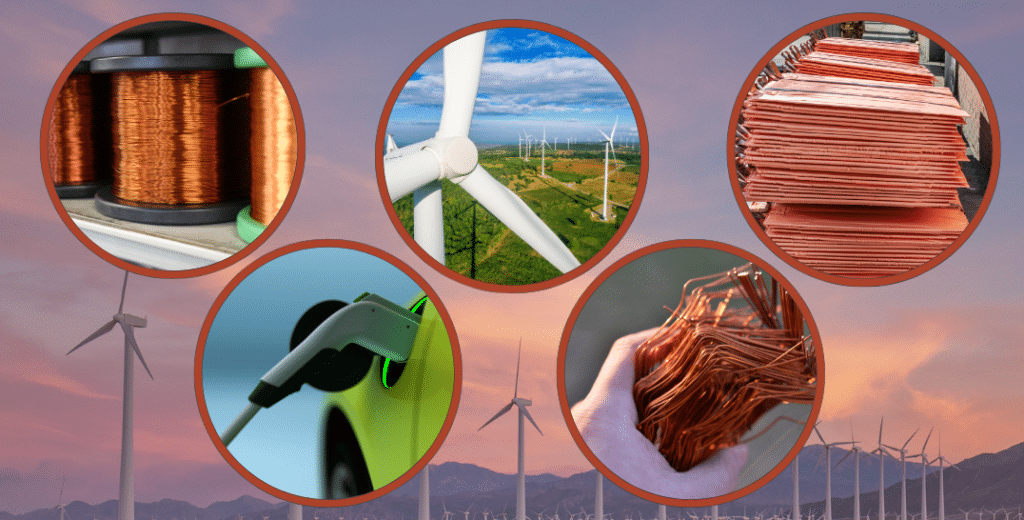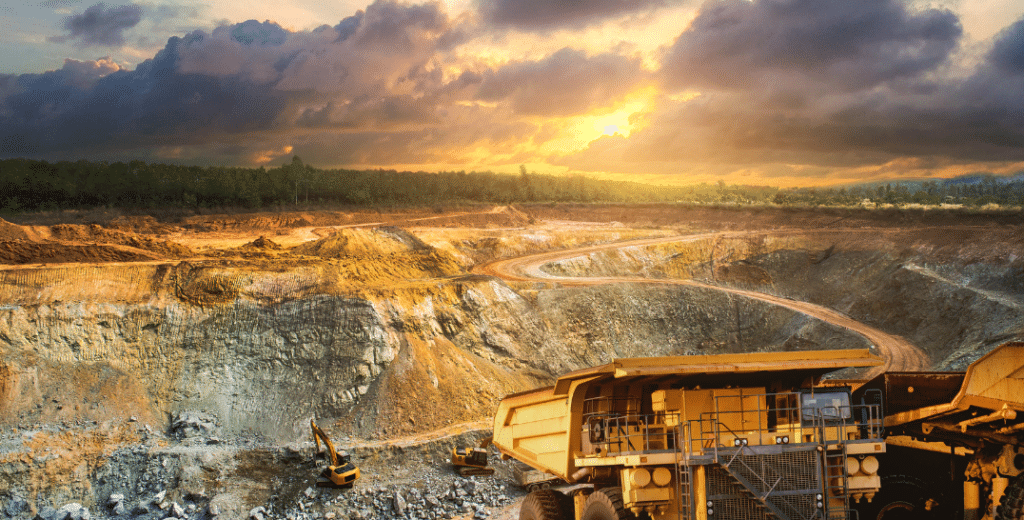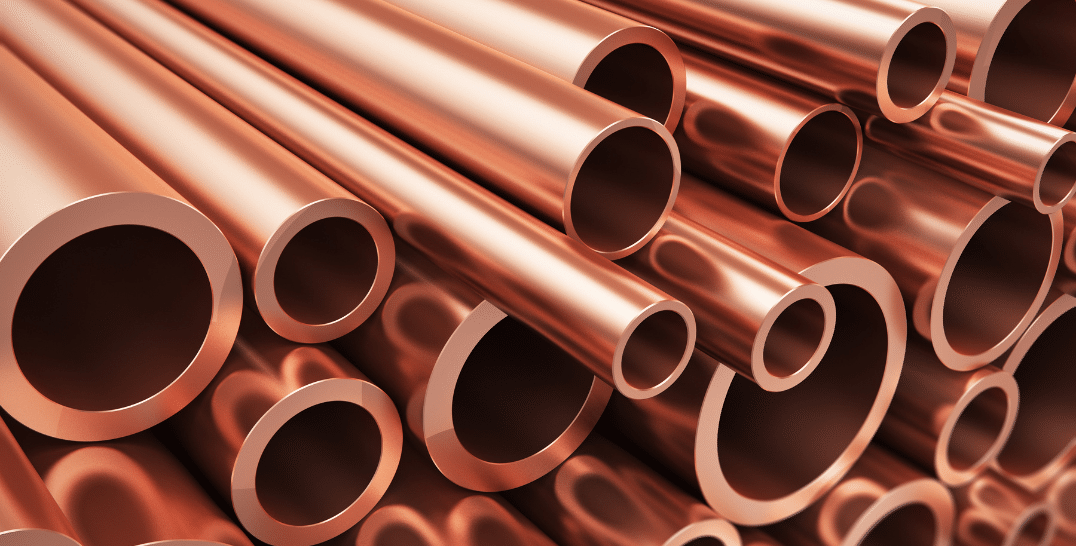By James Hyland, MiningIR
As the global shift towards renewable energy gains momentum, the demand for copper—a critical component in nearly all green technologies—has surged. This surge is especially significant in Europe and the United States, where ambitious renewable energy targets are set against the backdrop of complex supply chain challenges. Copper’s role in renewable energy systems, including power generation, transmission, and storage, makes it a linchpin in achieving these targets.
Copper is essential for renewable energy projects. It is used extensively in wind turbines, solar panels, and the infrastructure needed for clean power distribution. A single wind turbine, for example, can contain up to 4.7 tonnes of copper, while solar photovoltaics require significant amounts per unit area. As nations aim to expand their renewable capacity, the demand for copper intensifies, bringing attention to the critical need for robust supply chain strategies.
Citi’s analysts are bullish on the copper market, anticipating significant demand increases from sectors like electric vehicles and renewable energy. Max Layton, Global Head of Commodities Research at Citi Bank in London, expects a strong market rally for copper. He noted copper’s essential role in decarbonization efforts and its superior liquidity relative to other commodities, suggesting it could experience a bull run similar to oil in 2008. According to Citi, although copper prices are currently low, they are expected to start rising in the next six to twelve months, possibly reaching up to $15,000 per ton by 2025 if the most optimistic scenario plays out.
Europe and the United States are actively expanding their renewable energy infrastructures as part of their commitment to the Paris Agreement. The European Green Deal and the U.S. Green New Deal outline vigorous plans for reducing carbon emissions, heavily relying on increased renewable energy adoption. However, meeting these green targets is inextricably linked to the availability and sustainable management of copper.

The copper supply chain is fraught with several challenges. Firstly, copper resources are finite and predominantly located in areas with geopolitical tensions or governance issues, such as Chile and Peru, which collectively account for nearly 40% of the world’s copper production. This concentration of copper supply in a few regions adds a layer of risk—political instability, regulatory changes, and local community opposition can all disrupt supply.
Secondly, the mining and refining of copper require significant energy inputs and entail substantial environmental impacts. As such, there is a pressing need to balance the copper-driven aspects of the renewable revolution with sustainable practices that minimize ecological damage and greenhouse gas emissions.
Moreover, the logistics involved in transporting copper from mines to manufacturing facilities and then onto construction sites globally can be complex and inefficient. This aspect of the supply chain is vulnerable to bottlenecks, particularly in a post-pandemic world grappling with interrupted shipping lanes and labor shortages.

To tackle these challenges, several strategies can be employed. Diversifying supply sources is critical. This includes not only exploring new mining territories but also ramping up recycling efforts. Recycled copper, which uses about 85% less energy than mined copper, could significantly alleviate pressure on primary copper sources.
Giant Mining Corp.‘s Nevada Project, involving historic underground mines with a past production of 2.8 million pounds of copper, exemplifies the strategic importance of revitalizing old mines. According to the NI43-101 report by Jeffrey M. Bickel, C.P.G., the Majuba Hill Copper Project contains estimated copper mineralization ranging from 50 million to 100 million tonnes, with grades between 0.15% to 0.30% Cu. This site also shows promise for a high-grade zone of 10 million to 20 million tonnes, potentially grading between 0.40% to 0.80% Cu, illustrating significant prospects for copper supply enhancement through advanced exploration and technological application in supply chain management.
Technology and innovation also play crucial roles. Advanced mining technologies can optimize ore extraction and processing efficiency, reducing both costs and environmental impacts. Blockchain technology could improve traceability and accountability in the copper supply chain, ensuring materials are ethically sourced and processes are transparent.
Further, strategic reserves of copper, similar to oil reserves held by many nations, could buffer against supply disruptions. These reserves would help stabilize prices in the volatile commodities market and ensure a steady supply in times of geopolitical or economic turmoil.
In response to these supply chain challenges Europe and the United States have launched initiatives to secure their copper needs sustainably. The European Union has classified copper as a critical raw material, initiating actions to boost domestic mining and recycling rates. Simultaneously, the U.S. Department of Energy’s Critical Materials Institute is focusing on technologies to enhance copper recovery and recycling processes.
Both regions are also investing in research and development to decrease the copper intensity of renewable technologies without compromising efficiency. Innovations in materials science, such as using alternative metals or improving product designs to use less copper, are areas of intense research.
As Europe and the United States push forward with their renewable energy agendas, the management of copper supply chains becomes increasingly critical. Effective strategies that encompass diversification of supply, technological advancements, and sustainable practices are essential to support the renewable energy infrastructure reliably and sustainably.
Addressing the copper supply chain challenges is not just about securing a material supply; it’s about ensuring that the transition to renewable energy is resilient, sustainable, and equitable. As we stand on the brink of a renewable energy revolution, copper remains both a challenge and an opportunity—a testament to its enduring value in our shift towards a greener future.













